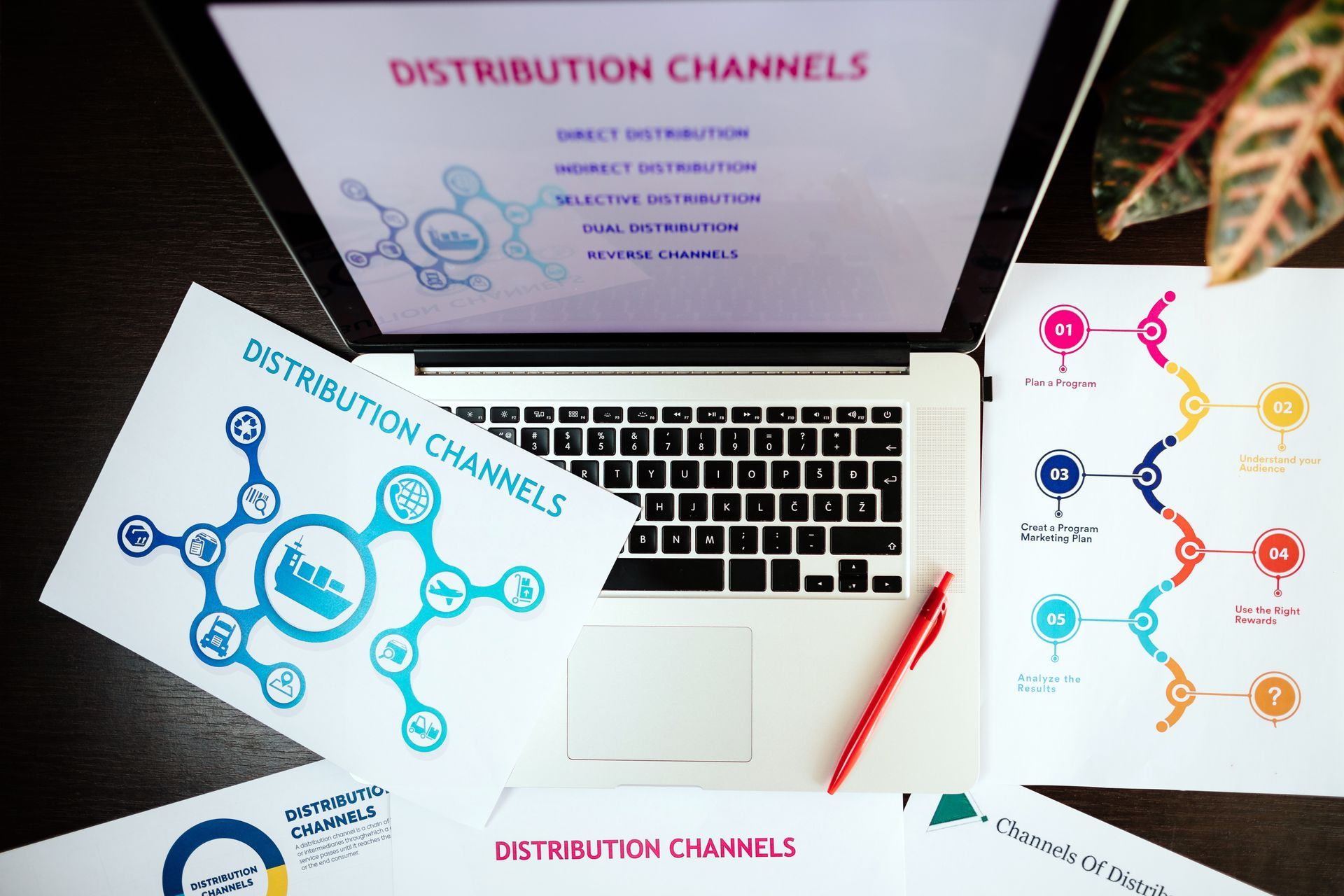The Rise of CDPs in a Cookie-Less World: How to Adapt

The digital world is changing fast. With third-party cookies soon to be gone, companies face a big problem. They need to manage and use data without breaking privacy rules.
Customer Data Platforms (CDPs) are becoming key players. They help gather, unite, and sort out data from different places. This gives a full picture of who the audience is. At LayerFive, we help brands get the most out of their data. We make marketing better and keep data privacy compliance in check.
Key Takeaways
- CDPs offer a unified customer view, boosting marketing efforts.
- They help in collecting and organizing data from multiple sources.
- CDPs ensure data privacy compliance, a critical aspect in today's digital landscape.
- LayerFive's expertise can help brands adapt to the cookie-less world.
- Effective use of CDPs can significantly improve marketing ROI.
The Digital Marketing Crisis: Navigating a Cookie-Less Landscape
The digital marketing world is changing fast. Big browsers are stopping third-party cookies. This big change is hard for marketers who use these cookies a lot.
They need these cookies to know how well their ads work and who sees them. Now, businesses must find new ways to market. They need to adapt to this new world.
Why Major Browsers Are Eliminating Third-Party Cookies
Big browsers are getting rid of third-party cookies because of privacy concerns. They want to protect users' data. This is because of strict rules like GDPR and CCPA.
These rules make browsers like Safari, Firefox, and Chrome work harder to keep data safe. By removing third-party cookies, they help users control their data better.
The Immediate Impact on Marketing Attribution
Marketers are feeling the loss of third-party cookies a lot. They can't track how users move around the web anymore. This makes it hard to see who's responding to their ads.
Without this tracking, it's tough to know what's working and what's not. Businesses are looking for new ways to track their data. They're using tools like Customer Data Platforms (CDPs) and data integration platforms to help.
The Fragmented Consumer Identity Problem
As people use different devices and channels, their identities get split. This makes it hard for marketers to see the whole picture. They struggle to create a single view of their customers, which is key for data-driven marketing.
Marketers can't always track who is interacting with their brand. This leads to incomplete profiles and wrong marketing plans.
Why Billions in Marketing Spend Goes to Waste
Marketers spend a lot of money, but often it's not used well. They can't always tell what's working and what's not. This is because they can't link their efforts to actual results.
A customer analytics platform can change this. It helps marketers understand what customers really want. This way, they can make their campaigns better and save money.
The Challenge of Cross-Device and Cross-Channel Recognition
It's tough to know who is interacting with a brand across different devices and channels. People might use many devices and platforms to connect with brands. Marketers need strong ways to figure out who is who.
By solving this problem, marketers can get a clearer picture of their customers. This lets them make data-driven marketing plans that really work.
Customer Data Platforms: The Solution for Modern Data Management
With the decline of third-party cookies, CDPs are stepping in as the solution for modern data management challenges. Customer Data Platforms (CDPs) are becoming key for managing data today. They define a new way to handle data, different from old marketing tech.
Defining the Modern CDP Architecture
A modern CDP unifies consumer identities, improves attribution, and meets GDPR/CCPA rules. It has layers for data ingestion, processing, and activation. Data ingestion collects data from many sources like CRM systems and social media. The processing layer then combines this data into one customer view. The activation layer lets businesses use this data for personalized marketing.
As an industry expert says, "CDPs are essential for a unified customer view. They help businesses offer personalized experiences everywhere."
"The future of marketing is about uniting customer data for a single view. CDPs are making this possible."
How CDPs Differ from Traditional Marketing Technologies
CDPs are different from old marketing tech because they create a single customer profile. Unlike old systems with scattered data, CDPs offer a complete customer view. This helps businesses give personalized experiences and better marketing results. The main differences are:
- Unified customer profiles
- Real-time data processing
- Improved data governance and compliance
Our Marketing Data Platform fills these gaps by uniting consumer identities, boosting attribution, and following GDPR/CCPA rules. By using a CDP, businesses can succeed even without cookies.
The Strategic Imperative of First-Party Data
In today's world without cookies, first-party data is key for businesses to succeed. Companies must focus on building direct connections with their customers. This is vital for creating lasting data assets.
Building Direct Consumer Relationships
First-party data helps businesses connect directly with their customers. This builds trust and loyalty. By using data from different touchpoints, companies can offer personalized experiences that customers love.
- Enhanced customer engagement
- Improved customer retention
- Increased brand loyalty
Creating Sustainable Data Assets
Using first-party data, businesses can build sustainable data assets for growth. By managing and segmenting customer data, companies can improve targeted marketing. This leads to better customer experiences.
"The future of marketing lies in leveraging first-party data to create meaningful connections with customers."
Marketing Expert
Our tools help you succeed on Shopify, B2B, or with data services. They boost ROI and build trust by fostering direct consumer relationships. This also helps in creating lasting data assets.
Identity Resolution: The Core of Effective Marketing
In today's digital world, marketing success depends on knowing your customers well. A data integration platform helps by linking customer data from different places. This way, businesses get a complete picture of their customers.
Deterministic vs. Probabilistic Identity Matching
There are two ways to match identities: deterministic and probabilistic. Deterministic matching uses exact matches like email or phone numbers. Probabilistic matching, on the other hand, uses algorithms to guess identities based on patterns.
- Deterministic matching is very accurate but can miss data errors.
- Probabilistic matching is flexible but needs smart algorithms to work well.
A good marketing automation plan uses both methods. This way, it builds detailed customer profiles.
Creating Persistent, Privacy-Compliant Profiles
Making lasting customer profiles while keeping privacy is key. Companies must follow laws like GDPR and CCPA. They must handle customer data openly and safely.
- Use data minimization to lower privacy risks.
- Protect data with encryption and secure storage.
By finding this balance, businesses can improve their marketing. They also save money on data privacy rules. This boosts their marketing automation skills.
Data Privacy Compliance in the Age of GDPR and CCPA
As data privacy rules get stricter worldwide, companies must change to keep customer trust. The General Data Protection Regulation (GDPR) and the California Consumer Privacy Act (CCPA) have raised the bar for data handling. This affects how businesses gather, store, and use customer information.
Understanding Regulatory Requirements
Complying with GDPR and CCPA means knowing their details. These laws demand clear data collection, give users control over their data, and have tough penalties for breaking them. Companies need to grasp these rules to handle the complex world of data privacy.
The Cost of Non-Compliance
Ignoring these rules can cost a lot. GDPR fines can hit up to €20 million or 4% of a company's global sales. CCPA penalties can go up to $7,500 per breach. Plus, ignoring these laws can hurt a company's image and lose customer trust.
Building Consumer Trust Through Transparent Data Practices
Being open is essential for trust. By sharing how data is used and giving users control, companies can build strong bonds with their customers. Using a Customer Data Platform that focuses on privacy can help meet these needs and follow GDPR and CCPA rules.
Our Marketing Data Platform makes sure it follows GDPR/CCPA rules. It uses strong data protection and clear data use, helping businesses gain customer trust. This way, they avoid the high costs of not following these laws.
Unifying Consumer Data Across Touchpoints
With the rise of omnichannel marketing, it's now essential to unify consumer data. Consumers interact with brands on many channels. A customer analytics platform that can integrate and understand this data is key.
Breaking Down Data Silos
Data silos hinder a unified customer view. When data is scattered across different departments, understanding customer behavior is tough. Personalization software offers a single platform for managing customer data.
This helps businesses use a complete and accurate customer picture in their marketing.
Creating a Single Customer View
Having a single customer view is vital for personalized experiences. A customer analytics platform helps unify customer data. It gives insights into customer behavior across touchpoints.
This unified view lets businesses tailor their marketing. It improves customer engagement and boosts ROI and trust.
Enhanced Attribution Models for Accurate Marketing Measurement
The marketing world is changing fast. We need better ways to measure how well our marketing works. Old methods like last-click attribution don't cut it anymore. We need something more detailed to see how our campaigns really do.
Moving Beyond Last-Click Attribution
Last-click attribution is outdated. It only looks at the last touchpoint before a sale. But today's customers interact with many points before buying. Marketing automation helps us use more advanced models that see the whole journey.
- Multi-touch attribution models give a full picture of customer interactions.
- They show how different marketing channels affect customers.
- With customer segmentation, we can make our marketing more targeted.
Multi-Touch Attribution in a First-Party Data World
In a world where we have direct customer data, multi-touch attribution shines. It lets us see how our campaigns work across channels and devices. This way, we can measure our marketing's return on investment more accurately.
Our tools aim to improve marketing by giving more precise attribution models. With advanced models, we can really get to know our customers. This helps us adjust our marketing to fit their changing needs.
Implementing a Customer Data Platform: Strategic Considerations
Getting a Customer Data Platform (CDP) is a big step. It needs careful thought about many things. A good CDP can bring together customer data, make marketing better, and help your business grow. To do this, you must think about a few important points.
Assessing Your Organization's Data Maturity
Before getting a CDP, check how mature your data is. Look at the quality, completeness, and how easy it is to get to your customer data. A good check-up shows where you need to improve. This makes sure your CDP is strong and ready to go.
LayerFive's CDP works well with different data sources. This makes it easier to use your current data.
Integration with Existing Marketing Technology
A CDP should work well with your marketing tools. This includes CRM systems, marketing automation tools, and analytics platforms. Working together gives a clear view of how customers interact with you. This makes your marketing better.
For example, usingShopify lets you link your e-commerce data with a CDP. This creates a full picture of your customers. Whether you're inB2B or usingdata services, a good CDP can really help your business.
Setting Realistic Implementation Timelines
Getting a CDP is a big job that needs good planning. Setting realistic times helps keep everyone's hopes up and makes the start smoother. You need to know what the project is, what might slow it down, and what resources you'll need.
This way, you can avoid problems and make your CDP work well. It's a key tool for improving customer experiences, making marketing work better, or just bringing all your customer data together.
CDP Applications Across Business Models
CDPs are versatile and can be used in many business models. They help manage customer data well. They fit different needs, from e-commerce to B2B marketing and enterprise data services.
E-commerce and Shopify Integration
E-commerce sites, like those on Shopify, benefit from CDPs. They make it easy to collect and analyze customer data. This helps in making personalized marketing campaigns, boosting customer engagement and sales.
B2B Marketing Transformation
In B2B, CDPs change marketing by giving a clear view of customer interactions. This leads to better marketing, more leads, and higher conversion rates. Understanding complex customer journeys is key for B2B marketing, and CDPs shed light on this.
"The right data platform can make all the difference in understanding your customers and driving business growth."
Enterprise Data Services Implementation
Large companies need CDPs for their data services. They bring together data from different sources, creating a single customer view. This is vital for making strategic decisions. CDPs offer advanced analytics and data unification for enterprise data services.
CDPs help businesses of all types increase ROI and build trust with customers. They are essential for personalizing e-commerce, transforming B2B marketing, and managing enterprise data. In today's data-driven world, CDPs are key.
Measuring CDP ROI and Performance Metrics
In the world of data-driven marketing, knowing the ROI of a CDP is key. Businesses spend a lot on Customer Data Platforms. It's important to see how they affect marketing.
LayerFive's solutions aim to boost marketing performance and show clear ROI. They help businesses use customer data better. This opens up new chances for growth and betterment.
Key Performance Indicators for Data Platform Success
To see if a CDP is working, look at certain KPIs. These show how well it helps marketing. Some important ones are:
- Increase in customer engagement
- Improvement in customer retention rates
- Enhancement in personalization capabilities
- Reduction in data management costs
By watching these KPIs, businesses can see how well their CDP is doing. They can then make smart choices to improve their marketing.
Calculating the True Value of Unified Customer Data
Figuring out the real value of unified customer data is important. It shows how it helps marketing ROI. You can do this by:
- Looking at how it affects campaign results
- Seeing how it improves the customer journey
- Checking how it boosts customer insights
Experts say a unified customer data platform is key for personal experiences and growth. By focusing on these, businesses can really understand their CDP's ROI. This helps them see the value of marketing automation investments.
With LayerFive's CDP solutions, businesses can improve their marketing and see clear ROI. Our tools are made to help businesses succeed in the data-driven marketing world.
Overcoming Common CDP Implementation Challenges
Setting up a Customer Data Platform (CDP) is complex and can face many hurdles. Companies often struggle with issues like data quality, integration, and getting everyone on board. These problems can slow down the success of a CDP.
Data Quality and Integration Issues
Ensuring top-notch data and smooth integration is a big challenge. Inaccurate or incomplete data can mess up insights. Poor integration can create data silos. To tackle this, companies need to focus on data validation and make sure it works with their current tech.
Organizational Alignment and Adoption
Getting everyone in the company to agree on using a CDP is key. Organizational alignment is needed from marketing, sales, and IT. It's important to have effective communication and training to make the transition smooth.
Technical Skill Gaps and Training Needs
Having the right technical skills is vital for a CDP's success. Technical skill gaps can hold back the platform's use. Investing in training and development is essential. This way, companies can fully benefit from their CDP, improving ROI and consumer trust through better personalization.
The Future of Marketing Data Platforms
The future of marketing data platforms is linked to new tech like AI, machine learning, and predictive analytics. As these techs get better, marketing data platforms will get smarter. This means businesses can make better choices and connect with customers more effectively.
AI and Machine Learning Enhancements
AI and machine learning will make marketing data platforms even more powerful. They will help platforms understand huge amounts of data, spot complex patterns, and guess what customers might do next. A recent study shows AI in marketing will grow by 50% in two years. This shows how important these techs are becoming.
Predictive Analytics and Customer Journey Orchestration
Predictive analytics will help businesses guess what customers want and like. This lets companies create experiences that are just right for each customer, boosting loyalty and engagement. A marketing expert says predictive analytics is essential for using customer data platforms fully. With LayerFive's help, businesses can use these new tools to improve their marketing and stay competitive.
Case Studies: Transforming Marketing with Unified Data
Unified customer data is key to successful marketing, as shown in case studies of top brands using Customer Data Platforms (CDPs). These brands have gained a big edge in the market by using CDPs.
How Leading Brands Leverage CDPs for Competitive Advantage
Top brands use CDPs to bring together customer data. This helps them make marketing campaigns that really hit the mark. For example, a big e-commerce brand saw a 25% increase in customer engagement after using a CDP to connect data from different places.
- Enhanced customer segmentation
- Personalized marketing campaigns
- Improved customer journey orchestration
Measurable Outcomes and Lessons Learned
Using CDPs has brought big wins for these brands, like better ROI and more trust from customers. For instance, a leading retail brand boosted 30% in sales after a CDP helped them organize customer data and streamline marketing.
- Data-driven decision making
- Enhanced marketing efficiency
- Better customer insights
By using Customer Data Platforms, companies can boost ROI and build consumer trust. This changes their marketing for the better.
Conclusion: Thriving in the First-Party Data Era
The move away from cookies has made managing customer data key for marketing. Brands must focus on segmenting customers well to offer personalized services and grow. This is vital for success in today's market.
Using a Customer Data Platform (CDP) helps businesses combine their data. This way, they can understand their audience better and make targeted ads. LayerFive assists brands in using their data effectively, helping them succeed in the first-party data world.
As marketing changes, focusing on customer data and segmentation is critical. This approach helps brands build strong customer relationships and stay competitive.
FAQ
What is a Customer Data Platform (CDP) and how does it help in a cookie-less world?
A Customer Data Platform (CDP) collects and organizes customer data from many sources. It helps businesses see their customers as a whole. In a world without cookies, CDPs use first-party data to help businesses adapt. They also improve how we understand marketing and keep customer data private.
How do CDPs differ from traditional marketing technologies?
CDPs are different because they bring together customer data from all touchpoints. This gives a full view of the customer. They handle today's data management needs, like integrating data and keeping it private.
What are the benefits of using a CDP for marketing attribution?
CDPs help move beyond simple last-click attribution. They use more detailed models to show how marketing really works. This makes marketing spending more effective.
How do CDPs ensure data privacy compliance?
CDPs protect data with encryption and access controls. They also help follow rules like GDPR and CCPA. This makes data practices clear and respects customer rights.
What are the key considerations when implementing a CDP?
When starting with a CDP, look at your data readiness. Make sure it fits with your marketing tools. Also, plan well and address any data or skill gaps.
How can businesses measure the ROI of a CDP?
To see if a CDP is worth it, watch things like how much it costs to get a customer and how much they're worth over time. Also, see how well it tracks marketing efforts. This shows the real value of having all customer data in one place.
What are the future advancements in CDP technology?
CDPs will soon use AI and machine learning to predict and plan customer journeys. This will make marketing better, improve customer experiences, and increase ROI.
Can CDPs be applied across different business models?
Yes, CDPs work for many types of businesses, like online shops and B2B companies. They can work with various marketing tools, like Shopify, to boost ROI and trust.
You might also like:




